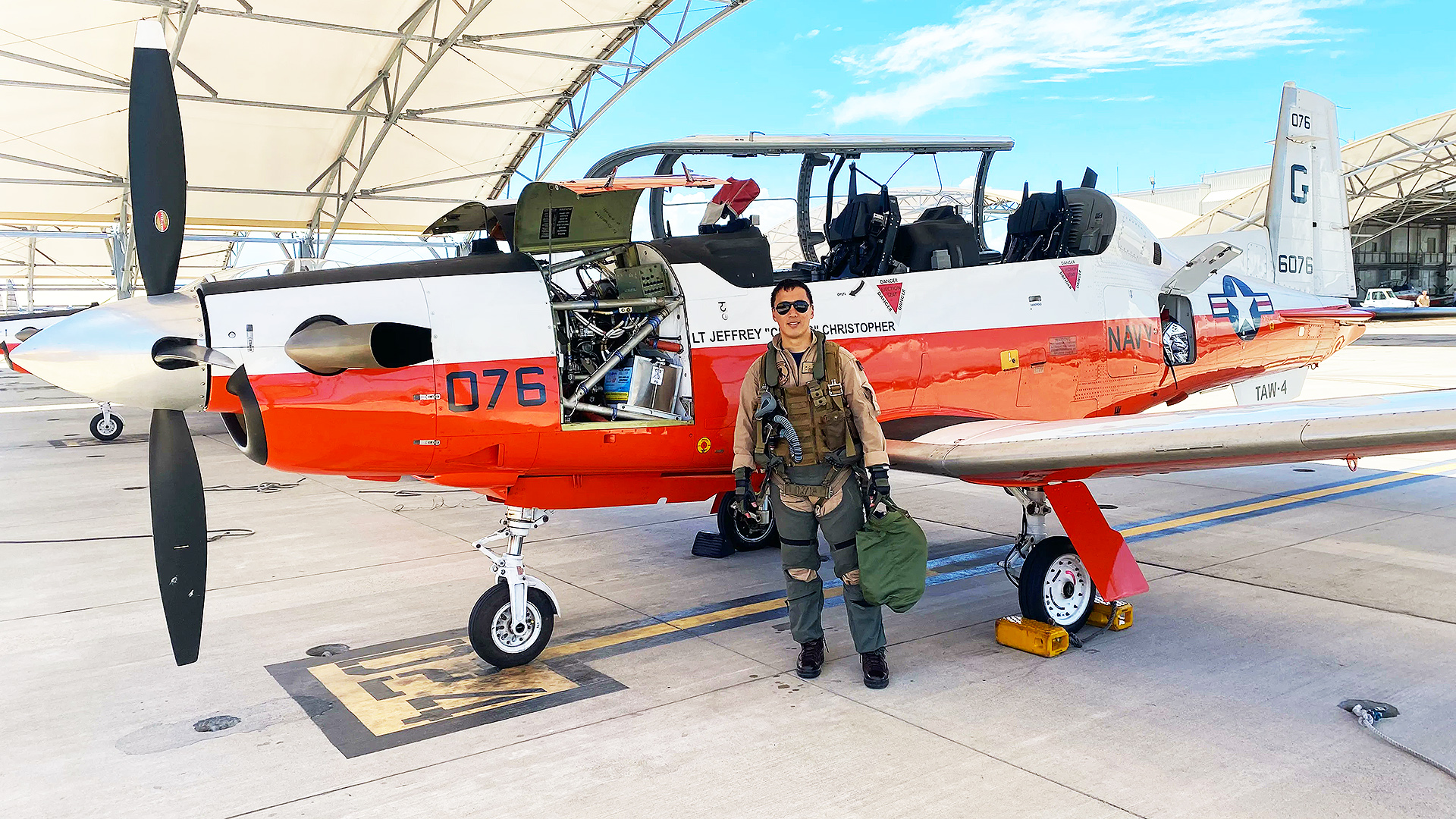Is there anything Jonny Kim can’t do?
Scratch piloting an airplane from the list of things the Navy SEAL-turned Harvard-trained medical doctor-turned NASA-astronaut hasn’t yet accomplished.
On June 6, Kim took his first solo flight in a Navy T-6 trainer.
“First solo complete!” he announced in a tweet. “An amazing & valuable growth experience. No substitute for pilot-in-command experience. Even had my 1st in-air malfunction to work through.”
What that malfunction was is not immediately known. We reached out to Kim via Twitter and the Chief of Naval Air Training for more information, and once we get it, we will let you know.
But the fact that he was able to handle whatever happened should come as no surprise from someone who has earned a Silver Star, a Bronze Star with Combat “V” and completed more than 100 combat missions in Iraq.

Nor should his humble response to completing his first flight shock anyone either.
“Despite being a “solo,” we’re not alone,” he tweeted. “Training, study & comms w/ teammates ensure we’re safe & successful.”
His official bio practically seems like someone in Hollywood was having some fun creating a new superhero.
Assigned as a Special Warfare Operator to SEAL Team Three, Charlie Platoon, in San Diego, California, Kim obtained a boat load of qualifications including Military Freefall Parachutist, Combatant Diver (closed circuit rebreather), Naval Special Warfare Special Reconnaissance Scout and Sniper, and Advanced Special Operations Techniques.
He ultimately served as a Special Operations Combat Medic, sniper, navigator and point man on more than 100 combat operations spanning two deployments to the Middle East including Ramadi and Sadr City, Iraq.

He was commissioned as a naval officer through the Navy’s enlisted-to-officer commissioning program, Seaman to Admiral-21, following graduation from the University of San Diego in 2012 with a degree in mathmatics. Kim went on to obtain his medical degree from Harvard Medical School (yes, arguably the nation’s most vaunted med school) and completed his internship with Harvard Affiliated Emergency Medicine Residency at Massachusetts General Hospital and Brigham and Women’s Hospital.
He reported for duty to NASA in August 2017 and completed two years of training as an Astronaut Candidate.
Though Kim just recently completed his first solo flight as a pilot, it was not his first experience in a flight trainer. Among other things like robotics, physiological training, expeditionary training, field geology, water and wilderness survival training and Russian language proficiency training, he took part in T-38 flight training which is customary for astronauts, but not as a pilot in command though.

Two years ago, Kim began his support of International Space Station Operations as a Capsule Communicator in Mission Control Center Houston. And in April 2021, he was selected to serve as the International Space Station’s Increment Lead for Expedition 65.
You can read more about his incredible career here.
That Kim would take a solo in a Navy trainer is not at all unusual, Lt. Cmdr. Mike Larson, spokesman for Naval Air Training, told The War Zone.
In fact, quite the opposite.
“It is common for our Navy officers who are NASA astronauts to train with us if they have not had previous flight training,” said Larson. “If they are not pilots, at some point in their NASA pipeline they will come to us for flight training. We also have seven candidates in one of our Pensacola squadrons going through the Astronaut Candidate Basic Aviation Curriculum (ASCAN) preparing for the Artemis Lunar program.”
Larson added that he’s not sure what Johnny Kim is slated for.
Greatness is probably a safe bet.
Contact the author: howard@thewarzone.com
Update: June 10. 4 p.m.
The Navy provided details about the malfunction Kim faced.
“Lt. Cmdr. Kim’s minor inflight malfunction involved an indicator light that the onboard oxygen system had a problem,” Larson told The War Zone. “He never experienced an actual problem with the oxygen. He went though the checklist and coordinated with Air traffic control to return to base as a precaution.”
While Kim didn’t experience an actual oxygen problem, the Air Force in 2018 grounded its entire fleet of 444 Texan IIs over concerns about hypoxia, a lack of oyxgen in the blood. The Air Force later found that parts of the planes’ on-board oxygen generation system had been failing a higher than expected rate.
After figuring out the problem, the flying branch came up with a plan to install upgraded versions of the T-6’s onboard oxygen generating system, called SureStream, military.com reported last year. Those changes were anticipated to begin rolling out toward the end of this calendar year and include sensors measuring the levels of oxygen fed to the pilot, which most T-6s didn’t previously have.
